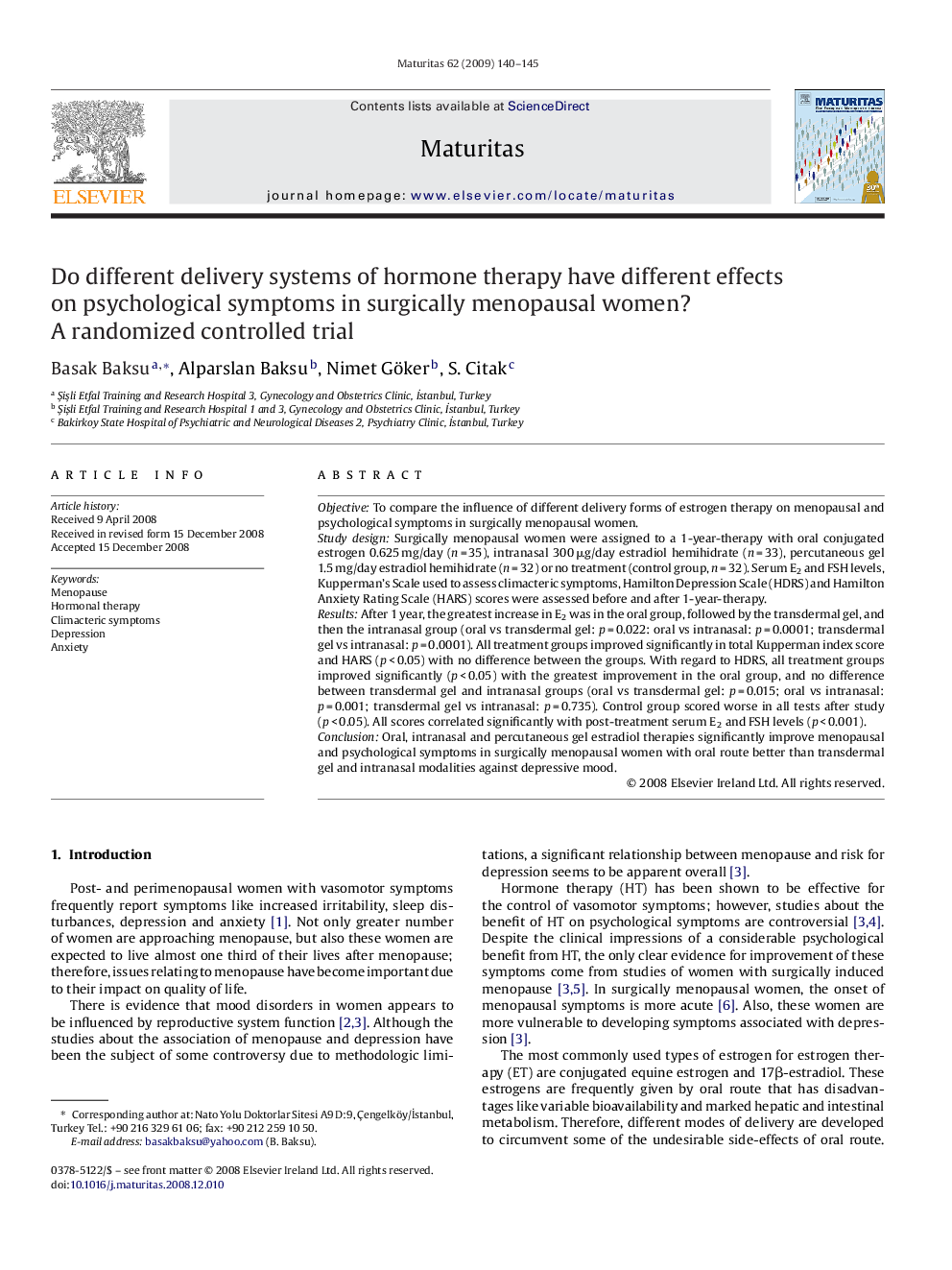| کد مقاله | کد نشریه | سال انتشار | مقاله انگلیسی | نسخه تمام متن |
|---|---|---|---|---|
| 1918501 | 1047957 | 2009 | 6 صفحه PDF | دانلود رایگان |

ObjectiveTo compare the influence of different delivery forms of estrogen therapy on menopausal and psychological symptoms in surgically menopausal women.Study designSurgically menopausal women were assigned to a 1-year-therapy with oral conjugated estrogen 0.625 mg/day (n = 35), intranasal 300 μg/day estradiol hemihidrate (n = 33), percutaneous gel 1.5 mg/day estradiol hemihidrate (n = 32) or no treatment (control group, n = 32). Serum E2 and FSH levels, Kupperman's Scale used to assess climacteric symptoms, Hamilton Depression Scale (HDRS) and Hamilton Anxiety Rating Scale (HARS) scores were assessed before and after 1-year-therapy.ResultsAfter 1 year, the greatest increase in E2 was in the oral group, followed by the transdermal gel, and then the intranasal group (oral vs transdermal gel: p = 0.022: oral vs intranasal: p = 0.0001; transdermal gel vs intranasal: p = 0.0001). All treatment groups improved significantly in total Kupperman index score and HARS (p < 0.05) with no difference between the groups. With regard to HDRS, all treatment groups improved significantly (p < 0.05) with the greatest improvement in the oral group, and no difference between transdermal gel and intranasal groups (oral vs transdermal gel: p = 0.015; oral vs intranasal: p = 0.001; transdermal gel vs intranasal: p = 0.735). Control group scored worse in all tests after study (p < 0.05). All scores correlated significantly with post-treatment serum E2 and FSH levels (p < 0.001).ConclusionOral, intranasal and percutaneous gel estradiol therapies significantly improve menopausal and psychological symptoms in surgically menopausal women with oral route better than transdermal gel and intranasal modalities against depressive mood.
Journal: Maturitas - Volume 62, Issue 2, 20 February 2009, Pages 140–145